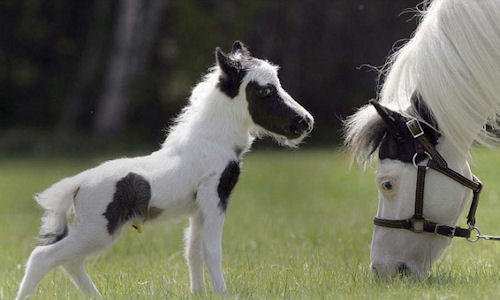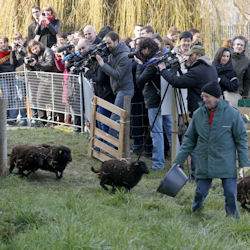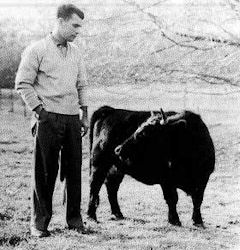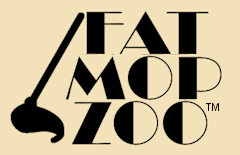
Oh yeah, we were talking about small barnyard breeds! I thought it was about time to do another cute animal post, so I decided to do a pseudo-sequel to the small cat and dog breeds post from the original opposite day. Today we look at a selected assortment of tiny barnyard animals, starting with…
The Falabella Horse – Widely recognized as the smallest breed of horses in the world, the Falabella breed averages a paltry two and a half feet tall at the withers. While a direct comparison is hard to make due to the variety of breeds, this is approximately half the height of a typical riding-breed horse. Newborns can be as small as twelve inches tall at birth.
The breed has roots going back to Argentina in the 19th century. A formal breed registry wasn’t formed until the 1940s, however. These humble horses are intelligent and easily trainable. They are often used as guide animals and/or used to pull small carts.

Ouessant Sheep – These mini-sheep hail from the island of Ouessant (appropriately enough) off the coast of Brittany France. Even the boy sheep only average about 19 inches at the shoulder. So your crotch might be safe, but I’d worry about your kneecaps.
These cute little things are so small that its’ very rare for a female to carry more than one sheep at a time. The island where they originate from has sparse vegetation. Natural selection for smaller (therefore less hungry) sheep resulted in the mini-herds found on the island.

Dexter Cattle – While not strictly the smallest cows in the world, these diminutive bovines are among the smallest cattle breeds. Adult specimens come in at a squat three feet at the shoulder and weigh 600-700 pounds. In comparison, a Holstein (milking) cow averages around five feet at the shoulder and about 1,250 pounds.
Dexters were developed as a breed in Ireland and brought to England in 1882. They all but disappeared in Ireland, but were continued as a pure breed in England. Their numbers continue to grow with the breeds popularity.
The cows are considered a friendly, dual-purpose breed. They can be raised for beef or milk production and are usually bred in favor of one trait or the other. I suppose the ones raised to be beef probably aren’t as friendly as the ones that get their teats pulled on all the time, but I could see it going either way. Their meat tends to be marbled and darker than typical beef product, and their milk richer in flavor.
Maybe the beef and milk is richer because it’s… condensed? Yeah, I went there. Go pet a mini-cow already.
